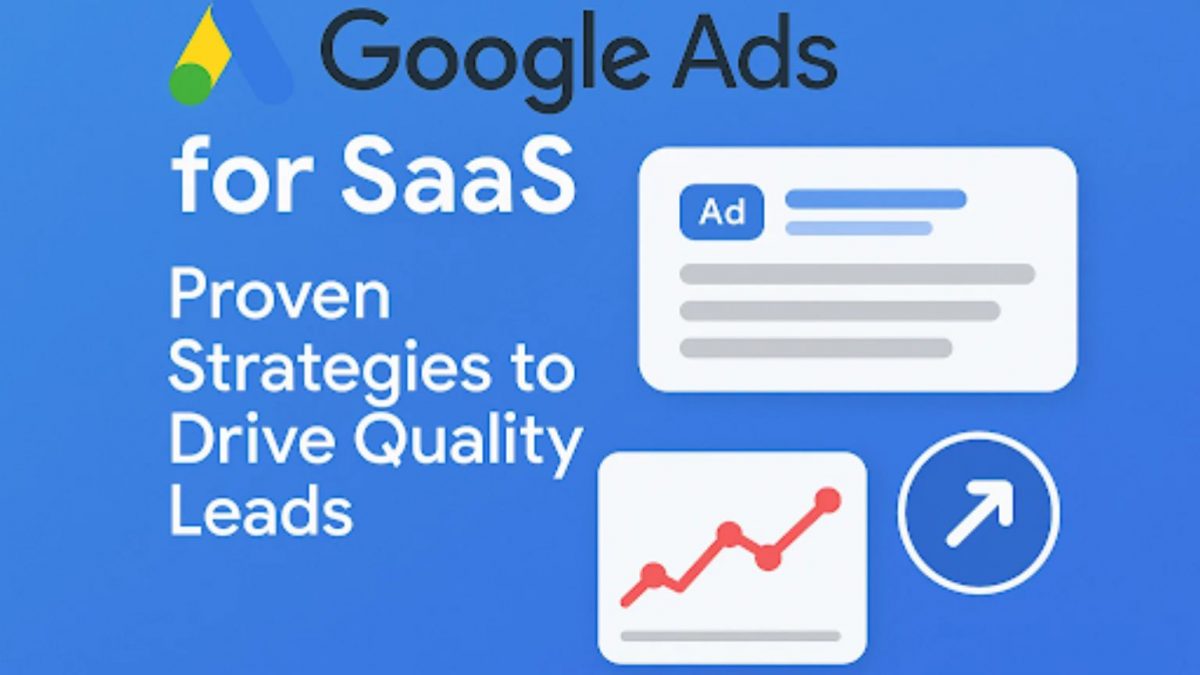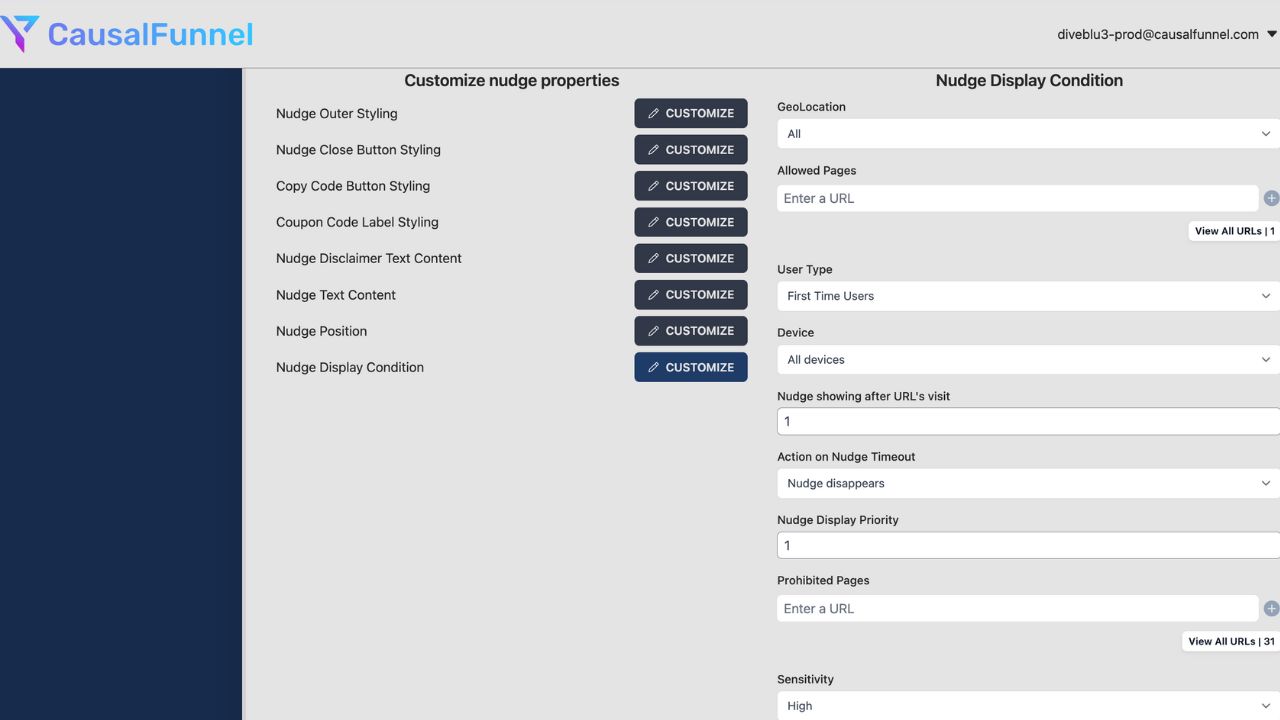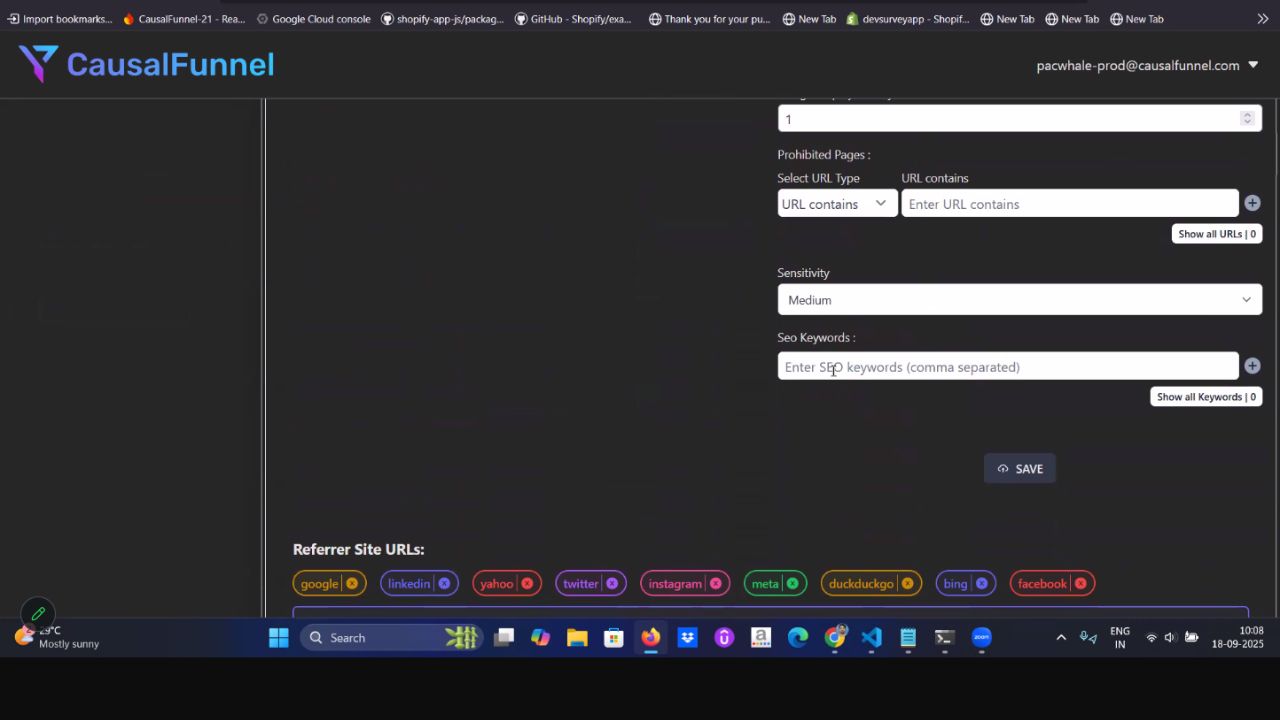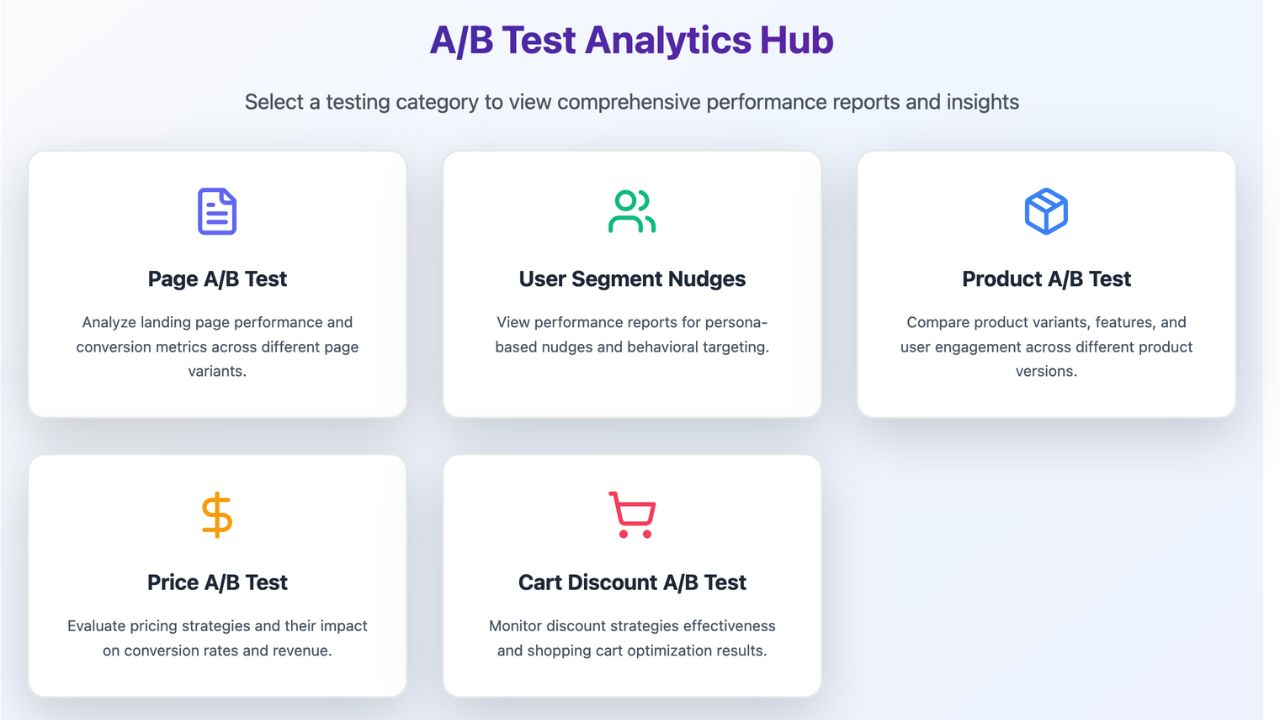
If you’re trying to get leads for SaaS companies, then it’s more competitive than ever. Companies like Slack, Zoom, Mailchimp, HubSpot, and Salesforce spend millions on Google Ads each year.
According to recent statistics, 65% of SaaS companies report improved lead quality when using targeted campaigns. Meanwhile, conversion rates can increase by 30% when proper audience segmentation and high-intent keywords are applied.
SaaS Google Ads campaigns demand strategic targeting, effective messaging, and continuous optimization. Without proper planning, ad spend can easily go to low-intent users.
With each technological advancement and new AI tool on the rise, the SaaS market is becoming a lot more saturated, and while you’re thinking of aggressively bidding on the keywords, most likely your competitors are doing the same.
This is where companies that master Google Ads gain a measurable advantage in lead acquisition, customer engagement, and revenue growth. In this article, we’ll share actionable, data-driven strategies that produce measurable results for SaaS campaigns.
By the end of this article, you’ll understand how to structure campaigns, optimize performance, and scale growth while reducing wasted spending. We design these tactics to maximize efficiency and ROI, whether we are running campaigns for startups or enterprise SaaS.
Seeing real results demonstrates the effectiveness of our strategies:
Proper tracking, structured campaigns, and continuous A/B testing support these results. Visuals, such as screenshots of dashboards and charts, reinforce performance improvements. With an ad spend of over $2 million across multiple SaaS clients, these strategies consistently deliver.
Search advertising involves balancing supply and demand. High-intent keywords are limited and expensive. Low-intent traffic wastes budget and generates poor leads.
Key Insights:
Bottom-of-Funnel Challenges:
Understanding these factors helps set realistic budgets and expectations for Google Ads campaigns.
SaaS growth has been exponential. Currently, over 35,000 SaaS companies compete in North America alone. Subscription economy growth continues, but market saturation drives higher advertising costs.
Competitive Factors:
SaaS companies must adopt advanced, tailored strategies instead of generic campaigns.
Calculating true Customer Acquisition Cost (CAC) goes beyond ad spend. Hidden costs can significantly impact profitability.
Common Hidden Costs:
Understanding hidden costs ensures better ROI evaluation and realistic planning.
SaaS marketing requires precise metrics to guide campaigns.
Key Metrics:
Tools that use AI-powered CLV models provide real-time, accurate predictions of customer value, helping businesses make data-driven decisions to improve acquisition, retention, and profitability.

Step-by-Step Process:
Example: If the CAC target is $100 and the LTV:CAC ratio is 3:1, your maximum CPA should be $100. Adjust budgets per campaign performance.
Mistakes:
Monitoring these metrics carefully ensures campaigns stay profitable and scalable. Correct calculations help reduce wasted spending and optimize CAC, improving overall ROI.
Step-by-Step Process:
Keyword research ensures campaigns target the right audience and maximize ROI.
Analysis Framework:
Market sizing informs budget allocation and realistic performance expectations.
Steps:
Forecasting ensures campaigns are data-driven, minimizing wasted spending.
Best Practices:
Proper structure simplifies management and improves performance.
Funnel Stages:
Budget and messaging should align with each stage for maximum impact.
Comparison:
KPIs like CPA, Click-Through Rate (CTR), and conversions guide bidding adjustments over time.
With the right account structure, funnel-based targeting, and bidding strategies in place, you now have the foundation for running effective SaaS campaigns.
These best practices ensure clarity, scalability, and performance optimization across every stage of the customer journey.
Let’s move forward and explore the 7 Proven Google Ads Strategies That Drive SaaS Growth, actionable approaches designed to turn these principles into measurable results.
Nowadays running Google ads is not just about driving clicks, it’s about attracting the right customers at the right stage of the funnel. There are plenty of long sales cycles and recurring revenue models that SaaS companies often need.
Below, you can find the 7 proven Google Ads strategies that consistently drive SaaS growth and deliver measurable results.
Targeting competitor keywords can attract users actively searching for similar SaaS solutions. Done carefully, it gives your brand a competitive edge without legal risks.
Focus on unique value propositions instead of using competitors’ trademarks. Ads should highlight features, benefits, or differentiators, such as “Trusted by thousands of teams worldwide.”
Tips: Combine competitor targeting with remarketing to capture returning visitors efficiently.

If you want more customers then you have to work on High-intent keywords. We must also look at the type of keyword we are focusing on for instance focus on commercial search terms to maximize SaaS conversions.
Filter irrelevant traffic using negative keywords to ensure budget efficiency and higher ROI. Expand keyword lists systematically by including product, feature, and long-tail terms. Tools like Google Keyword Planner and AI-driven SEO platforms can help uncover new opportunities and refine targeting for both paid and organic campaigns.
Steps
Tips: Regularly test ad copy variations to align with high-intent searchers.
Combine demographic, behavioral, and interest-based targeting to reach high-value prospects. Multi-layered targeting increases relevance and conversion likelihood.
Remarketing sequences nurture leads over time. Dynamic ads tailored to past behavior improve engagement.
Tips: Use personalized ad messaging to improve engagement and reduce wasted spend.

Ensure ad copy aligns with landing page content for better Quality Scores. Consistency improves trust and conversions.
Use A/B testing tools to test headlines, CTAs, and layouts systematically. Smooth UX with fast loading and clear conversion paths improves performance.
Tips: Highlight unique SaaS benefits above the fold to maximize engagement.
Implement a smart budget allocation strategy that considers campaign and keyword performance, so you can channel more spending toward high-performing campaigns and cut back on low-converting ones.
Dayparting (running ads during peak engagement times) maximizes impact, while geographic bid adjustments boost overall spending efficiency.
Tips: Combine dayparting with audience segmentation to increase relevance.
You can use ad extensions that can help you increase visibility and CTR. Use sitelinks, callouts, structured snippets, lead forms, and price extensions.
When applied effectively, CTR can improve by 20–30%. Optimize extensions continuously for relevancy.
Tips: Test extensions regularly with A/B testing and ad optimizer tools to maintain performance.
Tracking micros and macros like trial sign-ups and subscriptions respectively can help in conversions accurately, and the full integration with CRM provides full-funnel visibility.
Multi-touch attribution provides credit to all touchpoints in complex SaaS journeys. This helps optimize campaigns for better ROI.
Tips: Audit tracking setups regularly to prevent data gaps and optimize budgets effectively.
For any SaaS company it’s necessary to track the right KPIs that help in tracking campaigns, and by following the correct metrics you can stay profitable and scalable. Numbers alone don’t matter unless they connect directly to growth goals.
Clear KPI tracking helps teams identify which campaigns truly drive revenue versus those burning budgets.
Simply following a structure that monitors surface-level metrics like clicks or impressions is not enough. You need to have aligned reporting with funnel stages, customer journeys, and pipeline velocity.
Organize reporting by campaign, ad group, and funnel stage for actionable insights. This structured view makes optimization easier and helps stakeholders understand performance.
Continuous optimization is essential for long-term success. Static campaigns quickly lose efficiency in competitive SaaS markets.
There is a common misconception that optimization is a one-time process, but instead it’s a whole cycle. Each test builds insight, and every insight improves ROI. SaaS teams that treat optimization as ongoing outperform those relying on short bursts of testing.
Once campaigns deliver consistent ROI, scaling requires discipline and careful planning. Scaling too fast can inflate CAC, while scaling too slowly may leave growth untapped.
Step-by-Step Scaling:
If you want scaling to work, then you need to depend on strong data foundations. This is where the SaaS marketers must measure outcomes at every level of the campaign, from ad group tokeyword, before increasing investments. This prevents wasted spending and ensures expansion efforts remain profitable.
SaaS campaigns often fail due to poor strategy and misaligned execution.
Key Strategic Errors:
Addressing these mistakes ensures campaigns reach the right prospects and deliver measurable results.
Technical and Setup Errors
Even well-designed campaigns can underperform due to technical difficulties in setup.
Common Setup Errors Checklist:
Regular audits, proper setup, and ongoing testing prevent technical problems, ensuring campaigns operate efficiently and deliver consistent ROI.
Integrating Google Ads with your CRM and automation platforms makes campaigns more powerful.
This integration ensures your ad spend translates directly into measurable pipeline activity and closed deals.
SaaS sales cycles are long, making attribution critical for optimization.
Better attribution prevents wasted spending and highlights campaigns driving the highest-quality pipeline.
Account-Based Marketing Integration
For B2B SaaS companies, account-based marketing (ABM) enhances Google Ads effectiveness.
International Expansion Strategies
Global growth opportunities can be unlocked with well-structured campaigns.
The SaaS ad landscape evolves rapidly, and future readiness is key.
Future-proofing ensures SaaS marketers stay ahead, avoid stagnation, and maintain strong ROI.
To have a successful campaign with Google Ads for SaaS, then you need to have a structure and need to have a data-driven approach. First you need to start by applying the core strategies that include competitor targeting, high-intent keyword mining, and audience layering. You need to complement these strategies with landing page alignment, smart budget allocation, ad extensions, and robust conversion tracking.
You need to have a routine and a realistic timetable that helps you with research and campaign setups, along with tests that you work on on a weekly basis. Furthermore, you’ll also have to optimize weekly, and scale this so you can slowly but surely improve. You should also know how to use tools like A/B testing, SEO tools, and ad optimizers to streamline the process.
Additionally, track your progress and closely monitor CAC, LTV:CAC ratio, CTR, ROAS, and conversions to understand campaign effectiveness. These will be your major indicators that are going to reveal what’s working and what’s not working for you, and then you can make the adjustments needed.
Then you should start implementing full-funnel tracking, structuring campaigns effectively, and exploring advanced strategies like ABM or international expansion for global reach.
Leverage the right resources to maximize impact, use AI-powered A/B Testing tools to help simplify research, tracking, and reporting.
As you follow this roadmap, it can be achievable for any SaaS company to measurable growth, tracking spending, and generating quality and consistent high-quality leads. Structured campaigns, continuous testing, and data-driven decisions ensure long-term advertising success.
Empowering businesses to optimize their conversion funnels with AI-driven insights and automation. Turn traffic into sales with our advanced attribution platform.



